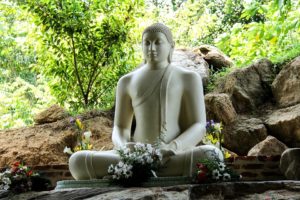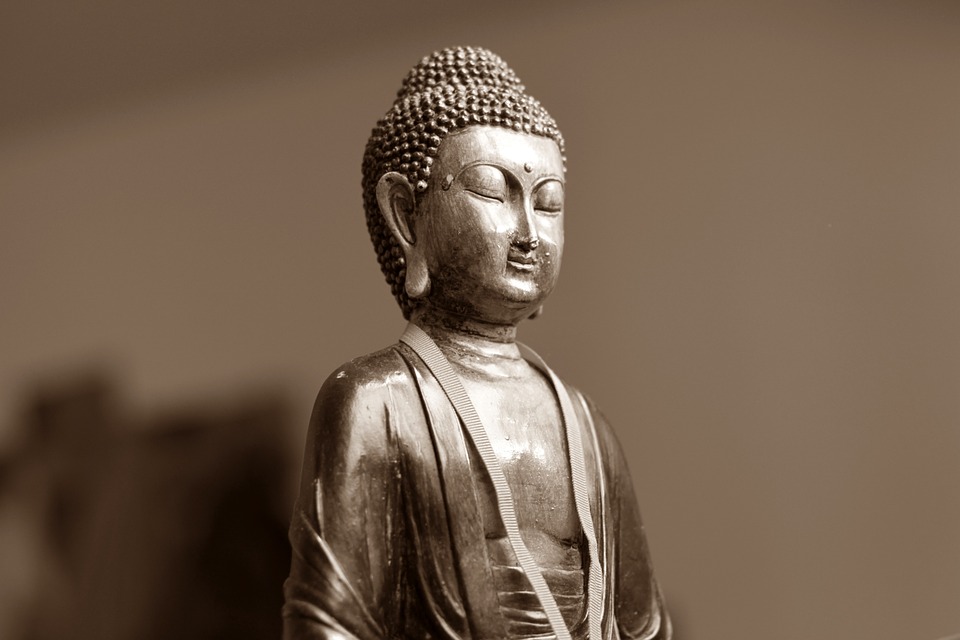Some say Buddhism began before we can even remember. In fact, they say that Shakyamuni Buddha, the guy in all the statues, is just the current Buddha, the Buddha of this era, and that there was one before him, and there will be another one that appears after Buddhism has completely been forgotten. These people say that each Buddha, before they become the Buddha of their time, goes through lifetimes (as in reincarnation) of trials and tribulations, of good deeds, and of consciously putting off their Buddhahood until it is sort of asked of them. Some say this.
Different versions from History Books
History books, however, usually tell a different version. They begin about 2,500 years ago in India, with a prince of the Shakya clan named Siddhartha. Born into Hinduism, into a rigid caste system, and into an incredibly privileged and sheltered life, this young, kind, smart boy was being reared to become king. By the age of 29, he had a wife and son, a harem, and every indulgence a person could ask for. He had also, however, traveled out into the world and saw three things that slowly changed him. He saw a person very sick, he saw another person old and tired, and he saw yet another person who had died. What he eventually realized is that this would happen to him, it would happen to everyone, that these were primary causes of suffering in the world, and that he wanted to dedicate himself completely to alleviate that suffering.
 So he left his privileged world, joined a small group of ascetics, famously cut off his long hair, and began a life of extreme poverty and dedicated spiritual practice. After doing this for about five years, and after attaining various trance-like states and realizing many mystical things, he felt like this sort of spirituality-one in which you eat very little and wear very few clothes-went a little overboard. He didn’t have the energy to attain enlightenment, and what he did glimpse he found he couldn’t sustain. So he walked down to a river by himself, sat under a tree, and began meditating. Just then a young girl walked by and offered him something to eat. He accepted, gratefully. With a little nourishment, he used his dedication, his newfound energy, and his love for all beings to penetrate the great mystery-the mystery of life and death. He sat there for seven days, as the story goes.
So he left his privileged world, joined a small group of ascetics, famously cut off his long hair, and began a life of extreme poverty and dedicated spiritual practice. After doing this for about five years, and after attaining various trance-like states and realizing many mystical things, he felt like this sort of spirituality-one in which you eat very little and wear very few clothes-went a little overboard. He didn’t have the energy to attain enlightenment, and what he did glimpse he found he couldn’t sustain. So he walked down to a river by himself, sat under a tree, and began meditating. Just then a young girl walked by and offered him something to eat. He accepted, gratefully. With a little nourishment, he used his dedication, his newfound energy, and his love for all beings to penetrate the great mystery-the mystery of life and death. He sat there for seven days, as the story goes.
Beautiful seductresses wandered in
During that time, demons (spiritual or psychological in my opinion) attacked him. He let them come in, and he let them go. He let them, and, touching his hand to the Earth, asking the Earth if he deserved to be there, feeling it shake in 10 directions in complete affirmation, let them go too. Eventually, the final morning dawned and he saw the morning star. He thought, “I, together with all beings, awake.” It was then that he truly became the Buddha.
Of course, there were other spiritual masters before him-incredible yogis and accomplished Brahmins (the elite of the caste system, of which the Buddha’s clan was a part)-but something about the Buddha’s accomplishment changed the world. And of course there have been other spiritual masters since him whose impact has been nothing less than seismic, but still, something about him made a huge difference.
The Creation of the Buddhist Order
He slowly created the Buddhist order, not because he wanted to create a religion; far from it. He just wanted to tell people about his discoveries, and thousands upon thousands wanted to listen. His aunt led a whole troop of women to join what was, early on, an all men’s group (which was culturally normal for the time). He accepted anyone into the order regardless of their caste, which was revolutionary for the time. He taught with patience, skillful means, and humor.
And what all his teachings boil down to are compassion, first and foremost, and wisdom, as a means to successfully manifesting a compassionate world. The number one wisdom teaching: that he, together with all beings, awake; that you, together with all beings, awake; that I, together with all beings, awake; that we awake together, and that together we awake.





